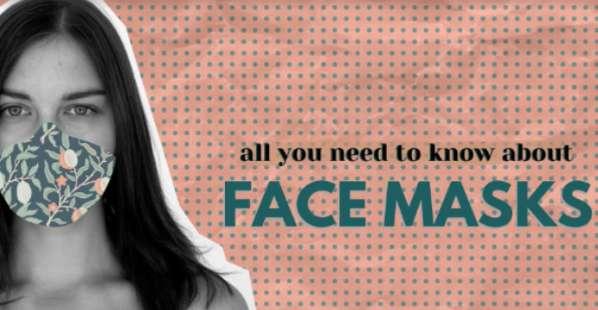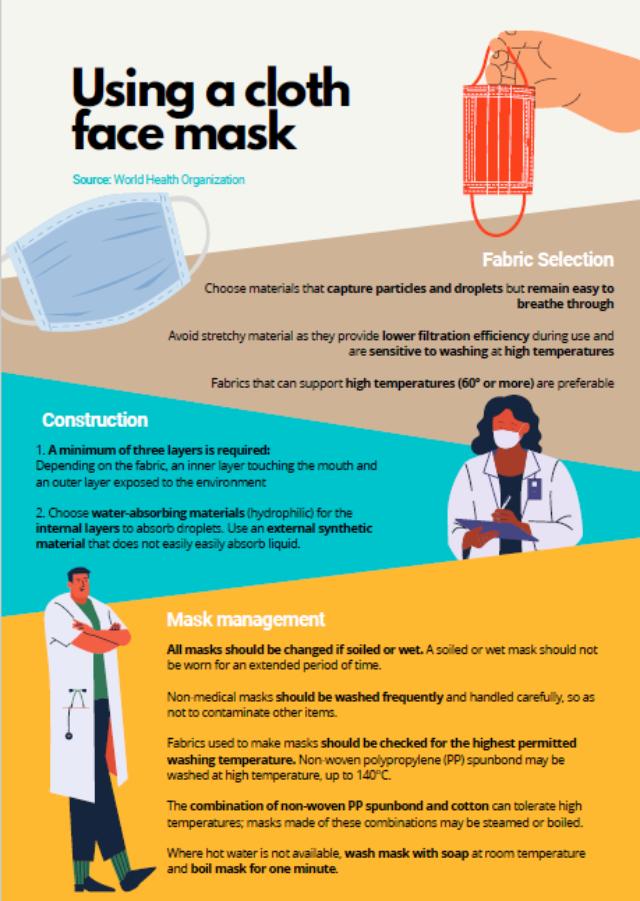Reply To:
Name - Reply Comment

By Kalani Kumarasinghe
The World Health Organization issued new guidelines on face masks, changing its stance on who should wear a face mask and when. The latest guidelines published on June 5 recommend that the public wear cloth masks made from at least three layers of fabric, especially when taking public transport and when physical distancing cannot be maintained. The World Health Organisation (WHO) maintained that the use of face masks should always be accompanied by frequent hand hygiene and physical distancing.
The updated guidelines also state that persons over 60 years of age, or with underlying conditions such as diabetes, chronic lung disease and cancer, should wear medical masks or surgical masks in areas where physical distancing cannot be practiced.
The latest WHO update is noteworthy as the guideline comes months after several countries including Sri Lanka made wearing a face mask a mandatory health regulation, since the onset of the disease. But this is the first major update to be issued by the WHO since the update on April 6, advising the wide use of face masks.
Asked if the Ministry of Health has updated its stance in line with the latest WHO update, Deputy Director General of Health Services Dr. Paba Palihawadana said the Ministry has not updated it’s guidelines on facemasks. “We have been recommending that people use a face mask when in crowded places, consistent with the guidelines we had set much earlier,” she said.
"Recently we have specified that there is no need to wear a face mask when you're driving or travelling with family in a private vehicle," she added. "We have also recommended that people don't use a mask while exerting themselves more than usual, for instance while exercising at a gym," Dr. Palihawadana said.
Health experts around the world meanwhile have questioned the WHO’s latest updates on Covid-19. A debate on COVID-19 cases, ensued, evaluating whether the disease is being spread by people without any symptoms. The discussion has seen the public health agency attract brickbats than bouquets, while scientists and health workers worldwide have opined that the face mask update from the WHO has come months too late.
The deadly disease has now crossed 7 million cases worldwide and surpassed 400,000 deaths. The WHO Director General did not fail to issue a warning at the press conference noting that it is still not time to relax efforts to contain the virus. “Masks can also create a false sense of security, leading people to neglect measures, such as hand hygiene and physical distancing. I cannot say this clearly enough: Masks alone will not protect you from Covid-19,” he said.
Although the update doesn't cite specific studies or research, WHO says the guidelines were formulated based on evolving evidence. WHO advised governments to encourage the general public to wear masks where there is widespread COVID-19 transmission and physical distancing is difficult, such as in shops or in other confined or crowded environments," Director General of the World Health Organization Tedros Adhanom Ghebreyesus said.
The updated guidance also contains new information on the composition of fabric masks. While stressing that fabric or cloth masks should at least have three layers, it also provided guidance on how to wash maintain fabric masks.
The WHO states that the use of cloth masks an alternative to medical masks is not considered appropriate for protection of health workers based. According to the agency, one study which evaluated the use of cloth masks in a health care facility found that health care workers using cotton cloth masks were at increased risk of influenza like illness, compared with those who wore medical masks.
The WHO also acknowledged that at present the widespread use of masks by healthy people in the community has not yet been supported by high quality or direct scientific evidence. It said that amidst a global shortage of surgical grade masks and Personal Protection Equipment (PPE), encouraging the public to make their own masks can even promote small scale enterprises.
WHO said that depending on the fabric used to make masks, the filtration efficiency and breathability can either complement or work against one another. According to their research, two non-woven spunbound layers, (the material used for the external layers of disposable surgical masks) offer sufficient filtration and breathability. Fabric masks on the other hand are extremely breathable, offer more comfort, but offer low filtration.
The WHO also adds a note to manufacturers of face masks to avoid the use of stretchable or elastic material. They said the material may stretch over the face, increasing it’s pore size over time and thereby resulting in very low filtration.
Dr. Palihawadana however notes that in Sri Lanka, the public should use whatever is available to them. "Even if a person has symptoms, it is advisable to wear whatever mask you find available until you get to the hospital," Dr. Palihawadana said. She added that at present the Ministry has not deliberated on the duration of which face masks will be recommended for use in public.
Face masks, whether surgical or fabric, must be used with utmost care. According to one study the heart rate, microclimate, temperature, humidity and subjective ratings were significantly influenced by the wearing of different kinds of face masks.
